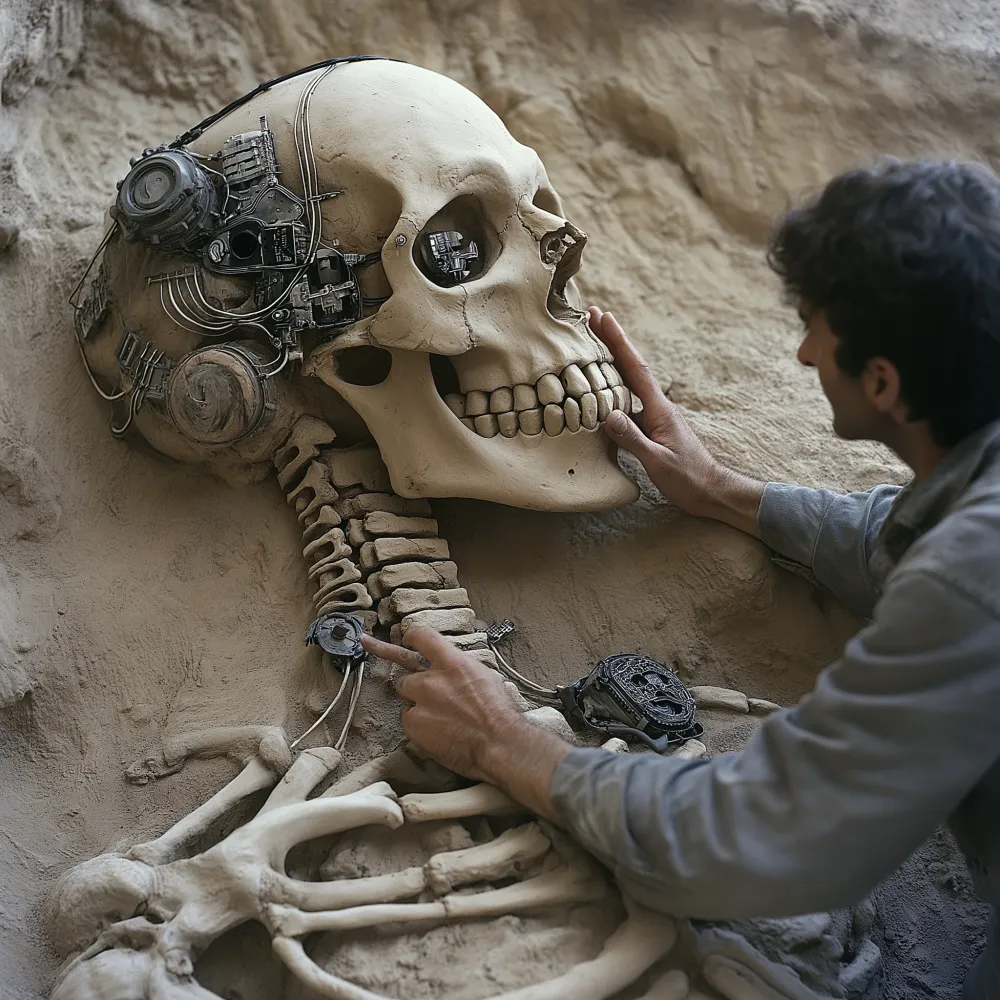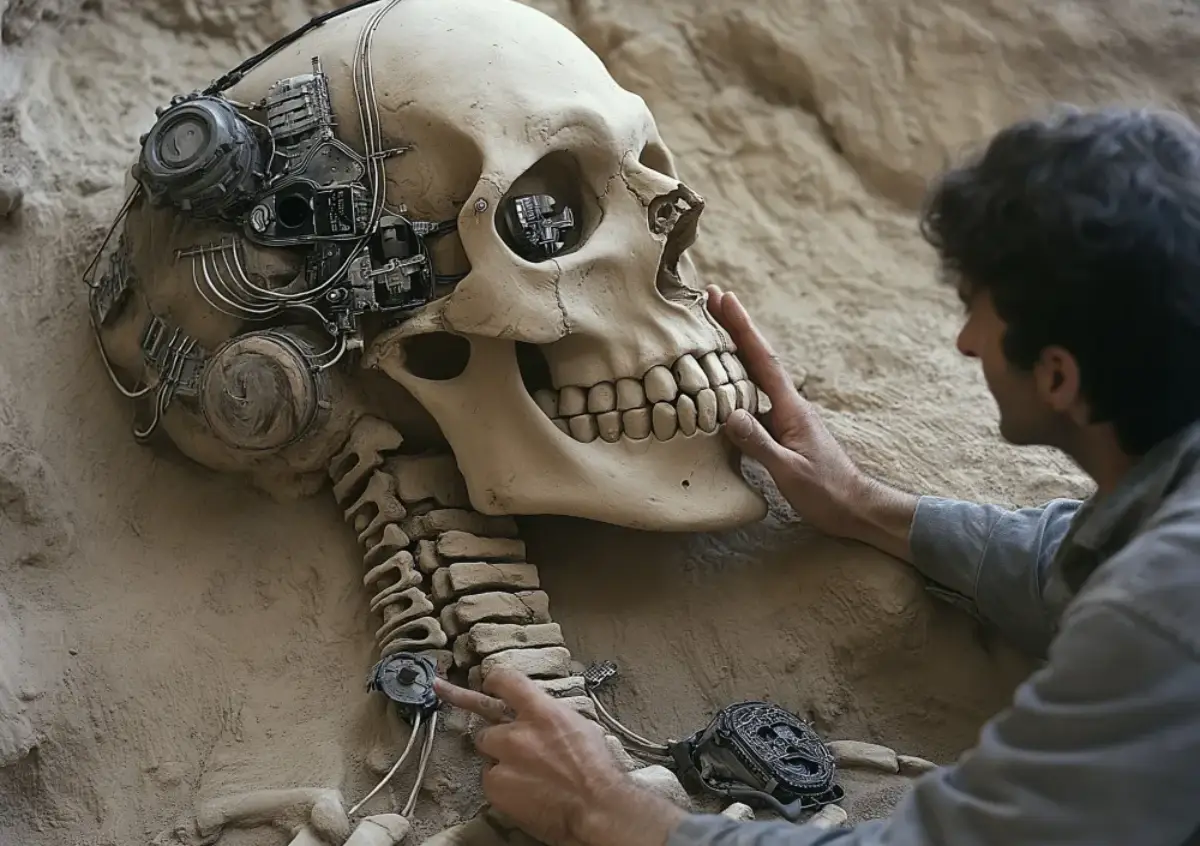In a discovery that defies all conventional understanding of human history, a team of archaeologists and anthropologists has uncovered a prehistoric human skeleton with advanced technology fused to the skull and bones. This jaw-dropping find, which some are calling the earliest sign of transhumanism, could rewrite the history of human evolution and technological advancement.
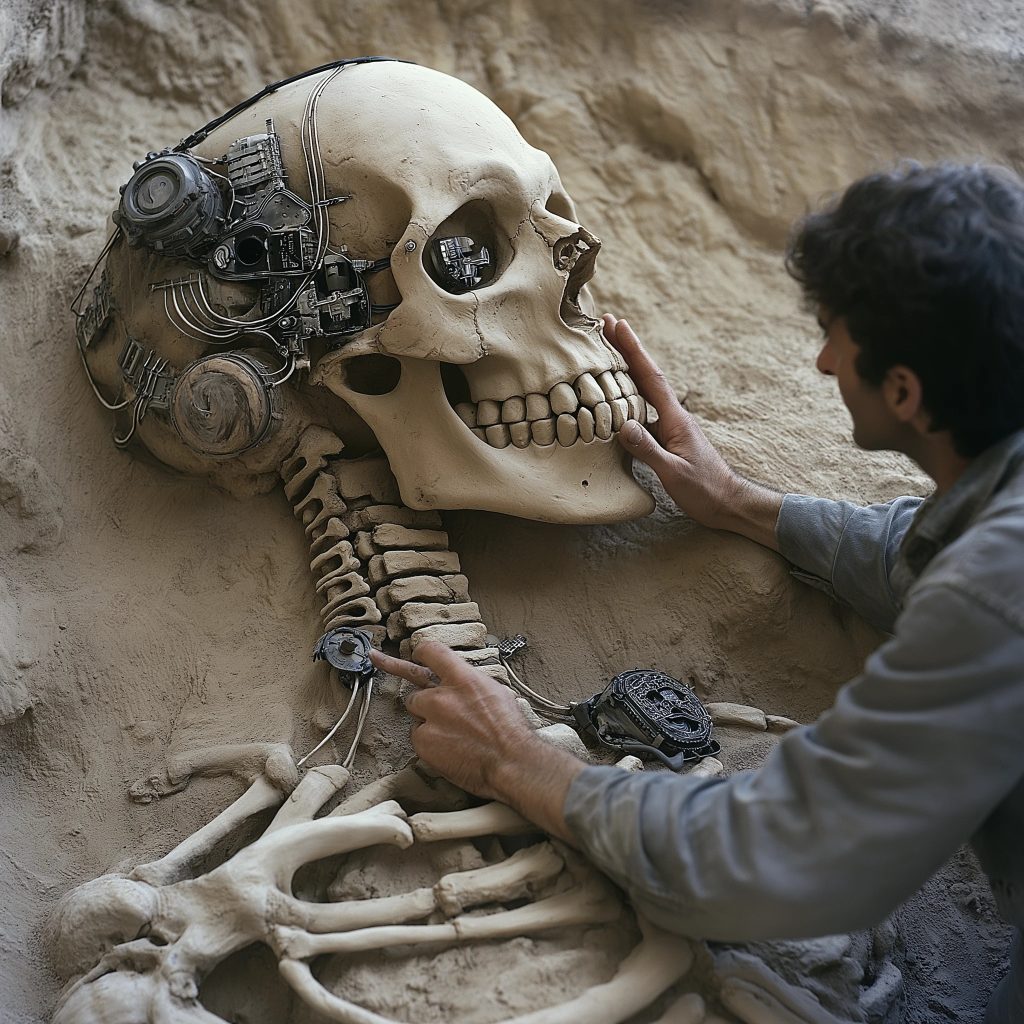
The discovery was made in a remote excavation site, where researchers were initially exploring what they thought would be a routine fossil find. Instead, they found something that has left the scientific community speechless: a well-preserved human skeleton with metallic components and intricate wiring seamlessly attached to the skull and spinal column. The technology, far beyond anything expected in prehistoric times, includes circuit-like structures embedded in the bones and a metal framework surrounding the skull.
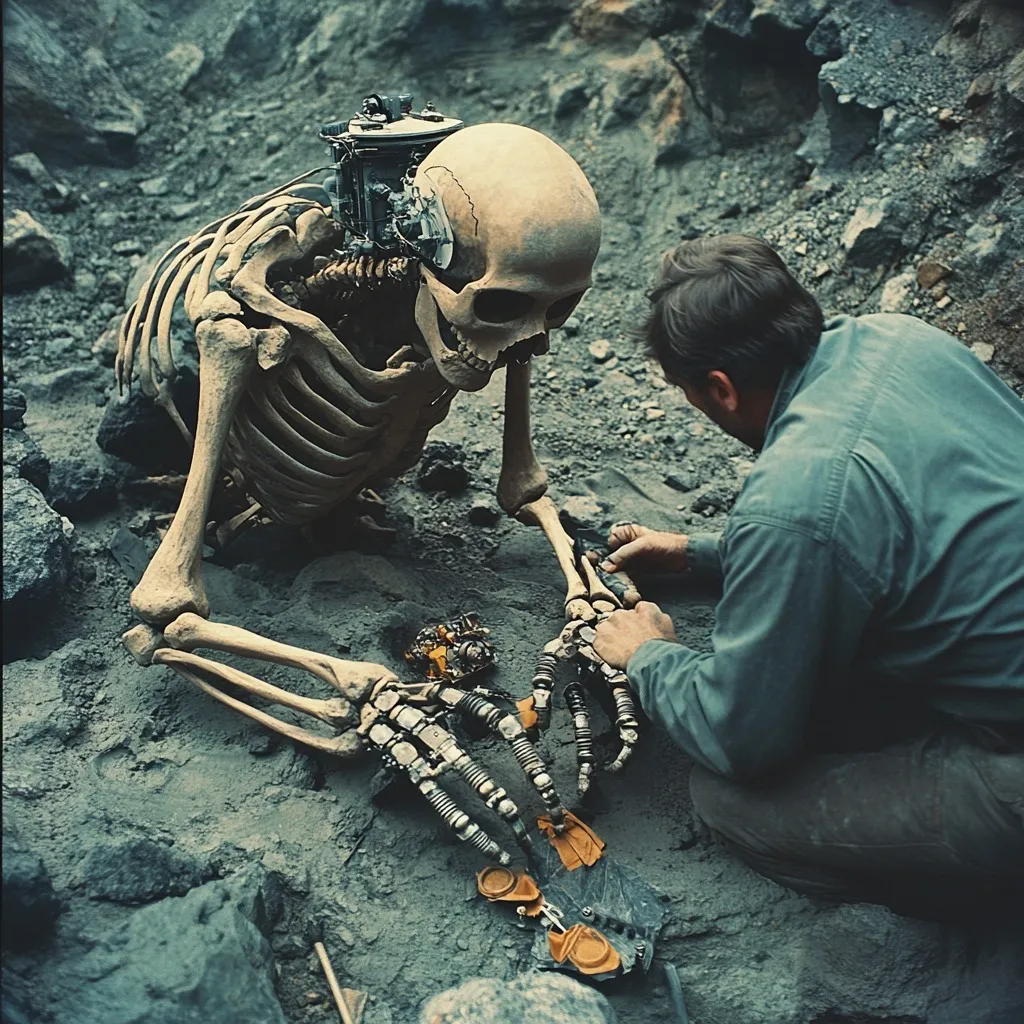
This find is not only unprecedented but also deeply unsettling. Archaeologists and anthropologists are now faced with a profound question: could this fossil be evidence of ancient transhumanism? Transhumanism, the idea of augmenting the human body with advanced technology, has typically been considered a modern-day concept. Yet, this prehistoric fossil suggests that early humans, or possibly an unknown civilization, experimented with enhancing the human body in ways we are only beginning to explore today.
Dr. Elise Morgan, a lead archaeologist on the site, commented, “This discovery challenges our understanding of human history and development. The level of sophistication in these implants is extraordinary, suggesting an advanced knowledge of anatomy, bioengineering, and technology that we never thought possible in prehistoric times.”
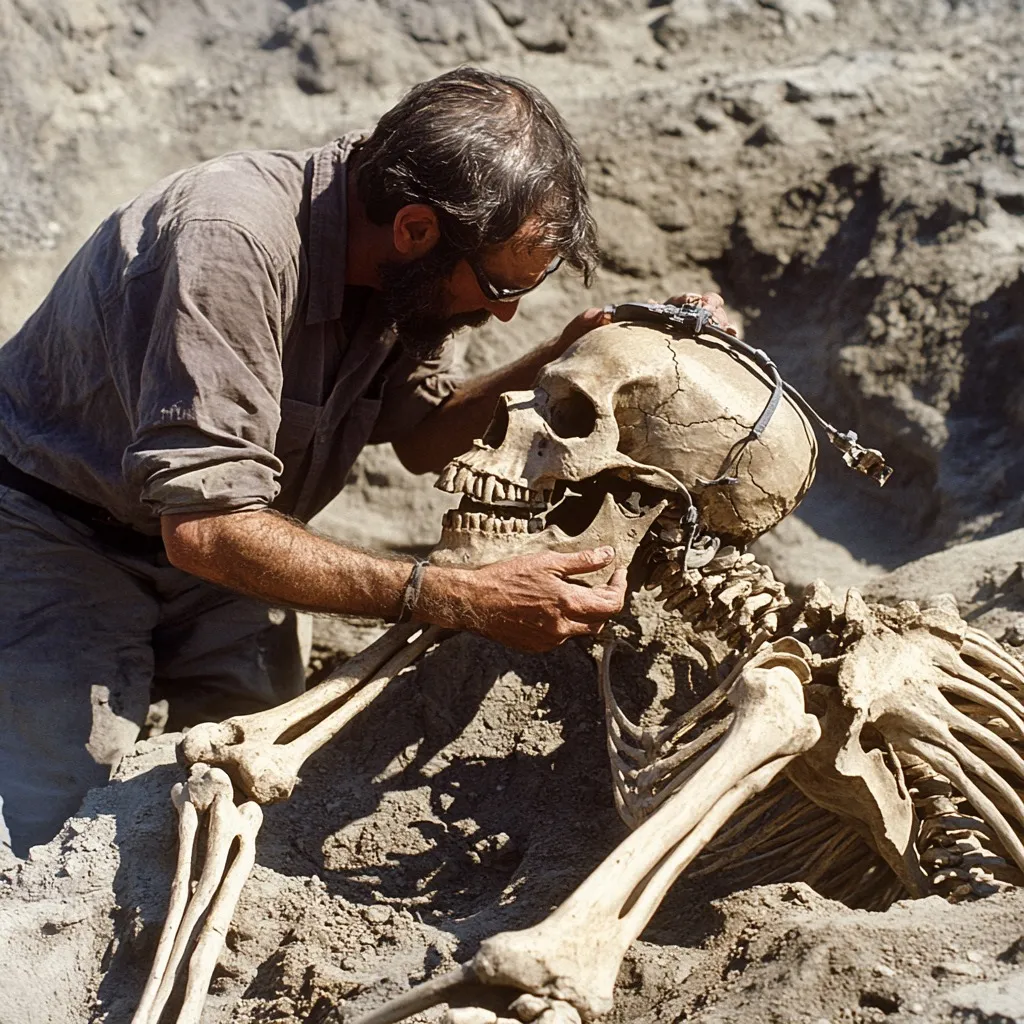
The implants embedded within the skeleton are not only intricate but also strategically placed, with a focus on the skull and spinal column, hinting that they may have been intended to enhance brain or nervous system functions. Preliminary analysis indicates that the metals used are resistant to corrosion, implying a level of technological knowledge that rivals or even surpasses modern metallurgy.
Could this individual have been part of an ancient experiment to enhance cognitive abilities or physical strength? Or, as some radical theorists have suggested, could this be evidence of ancient extraterrestrial influence on early humans? The possibilities are as thrilling as they are terrifying.
